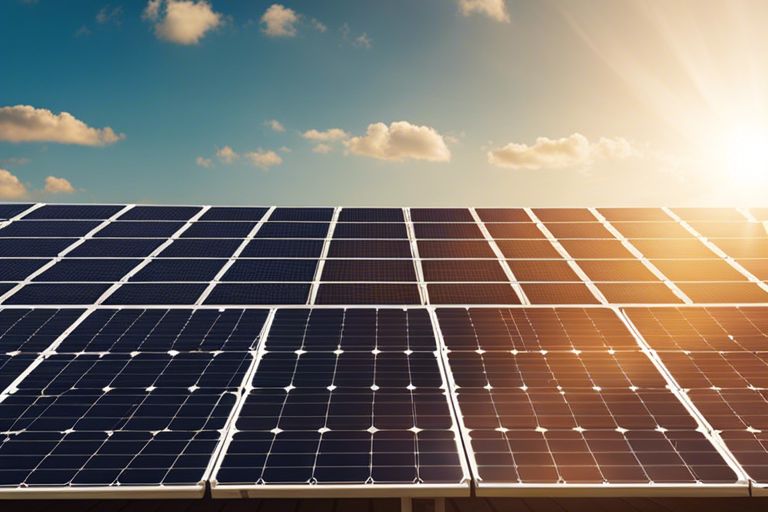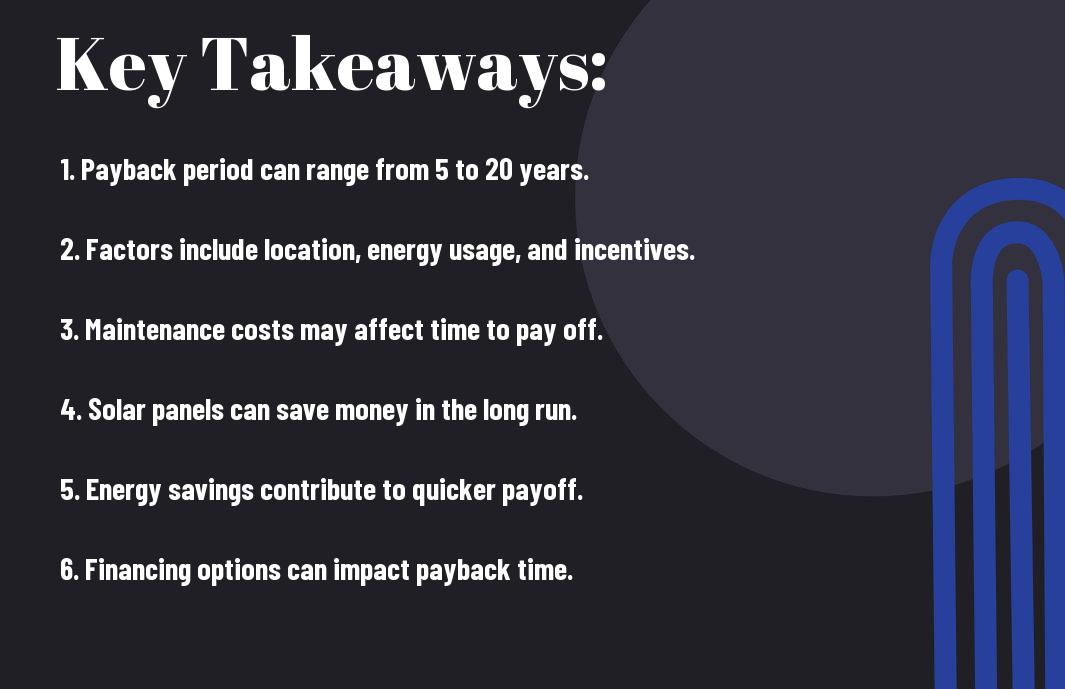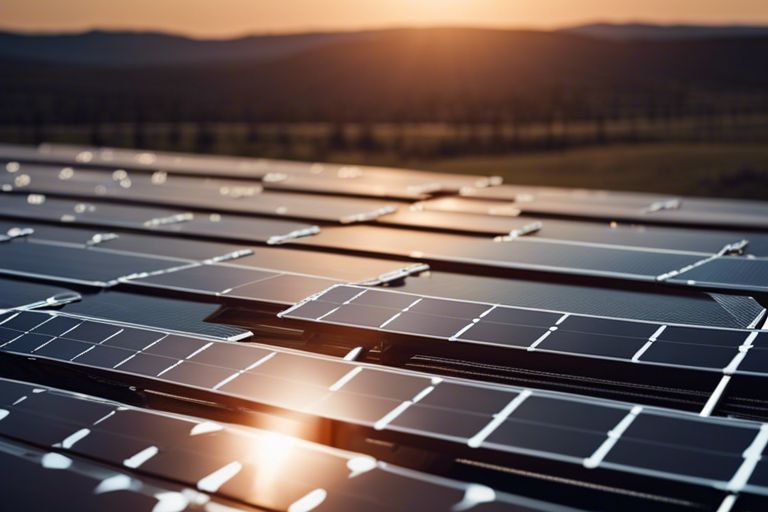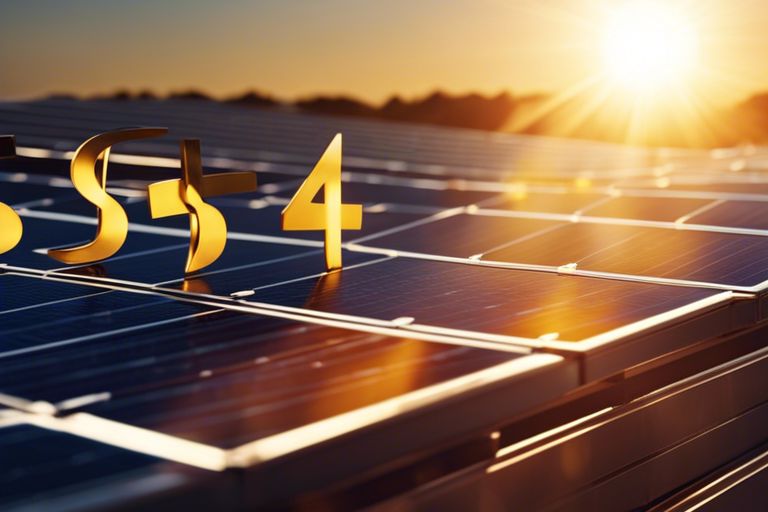With the increasing focus on sustainable energy sources, you may be considering investing in solar panels for your home. But you may wonder, how long will it take for these eco-friendly panels to start paying for themselves? In this informative blog post, we will break down the calculations and factors that determine the payback period for solar panels, allowing you to make an informed decision about this environmentally conscious investment for your household.

Key Takeaways:
- Initial Cost: The payback period for solar panels is heavily influenced by the initial installation cost.
- Location: The geographical location plays a significant role in determining how quickly solar panels pay for themselves due to sunlight availability.
- Incentives: Government incentives and rebates can shorten the payback period for solar panels.
- Energy Consumption: The amount of energy consumed in a household directly affects how long it takes for solar panels to pay for themselves.
- Quality of Panels: Investing in high-quality solar panels may lead to a quicker payback period due to efficiency and durability.

The Cost of Solar Panels
While exploring the topic of solar panels and their cost, you may be wondering about the financial aspects of investing in solar energy. To get a better understanding of this, you can refer to resources such as the Solar Panel Payback Period (Guide) to help you navigate the expenses and benefits of solar panel installation.
Initial Investment
For many people, the initial cost of purchasing and installing solar panels can be a significant financial undertaking. However, it’s important to remember that this upfront investment can lead to long-term savings on your energy bills while also contributing to a more sustainable future for the planet.
Installation Costs
An crucial component of the overall cost of solar panels is the installation expenses. These costs can vary depending on factors such as the size of your solar energy system, the complexity of the installation process, and any additional equipment needed for optimal performance. It’s crucial to factor in installation costs when budgeting for your solar panel investment to ensure a smooth and successful transition to solar energy.
Panels are the heart of your solar energy system and are responsible for converting sunlight into electricity. When considering the cost of solar panels, it’s crucial to weigh the quality and efficiency of the panels to maximize the return on your investment over time.

The Benefits of Solar Panels
Any homeowner considering investing in solar panels will find several benefits that make it a wise decision. From electricity savings to government incentives and increased property value, solar panels offer a range of advantages that make them a valuable addition to your home.
Electricity Savings
Electricity savings are one of the most significant benefits of installing solar panels on your property. By generating your electricity from the sun’s energy, you can reduce or even eliminate your monthly electricity bills. Over time, these savings can add up significantly, helping you recoup the initial investment in solar panels.
Government Incentives
The government offers various incentives to encourage homeowners to switch to renewable energy sources like solar power. These incentives can include tax credits, rebates, and other financial benefits that can help offset the cost of installing solar panels. Taking advantage of these programs can make solar panels even more affordable for you.
The government incentives for solar panels vary by location, so it’s imperative to research what programs are available in your area. By understanding and leveraging these incentives, you can make your investment in solar panels more cost-effective and beneficial in the long run.
Increased Property Value
Government studies have shown that homes with solar panels tend to have higher property values than those without. This increase in value can make your home more attractive to potential buyers if you ever decide to sell. Solar panels are seen as a desirable feature that can set your property apart in a competitive real estate market.
It’s worth noting that the increased property value associated with solar panels can vary depending on factors like the size of the solar installation, the quality of the panels, and local market conditions. However, in general, investing in solar panels can be a smart decision that pays off both in terms of cost savings and property value appreciation.
Calculating the Payback Period
Now, let’s probe calculating the payback period for solar panels. There are several factors that can affect how long it takes for your solar panels to pay for themselves. These factors include the cost of the solar panel system, your average monthly electricity consumption, the amount of sunlight your location receives, available incentives or rebates, and the cost of electricity in your area.
Factors Affecting Payback Period
- The cost of the solar panel system
- Your average monthly electricity consumption
- The amount of sunlight your location receives
- Available incentives or rebates
- The cost of electricity in your area
Recognizing and understanding how these factors impact your payback period can help you make informed decisions when considering solar panel installation.
Simple Payback Period Calculation
Payback period calculation is a straightforward way to determine how long it will take for your solar panels to pay for themselves. It is calculated by dividing the total cost of the solar panel system by the annual savings on your electricity bill.
An important point to note is that the payback period does not take into account the time value of money. This means that it does not consider the impact of inflation or the potential return you could have earned if the upfront solar panel investment was invested elsewhere.
Considering Inflation and Discount Rates
Periodic adjustments for inflation and discount rates can provide a more accurate representation of the payback period. Inflation can erode the value of your electricity savings over time, while discount rates reflect the potential return on investment you could have earned if the money was invested elsewhere.
Calculating the payback period with consideration for inflation and discount rates can help you better understand the long-term financial benefits of solar panel installation.
Average Payback Periods for Different Scenarios
Residential Solar Panels
Panels installed on residential properties typically have an average payback period ranging from 5 to 15 years. Factors such as the size of the solar panel system, local sunlight conditions, energy usage, and the cost of electricity in your area can all influence how quickly you will recoup your initial investment.
Commercial Solar Panels
Periods for commercial solar panels can vary widely depending on the size of the installation and the energy needs of the business. Large businesses with high energy consumption can see payback periods as short as 3 to 7 years, while smaller businesses may take up to 10 years to see a return on their investment.
Another important consideration for commercial solar panels is the availability of government incentives, tax credits, and rebates, which can significantly reduce the upfront costs and shorten the payback period.
Industrial Solar Panels
Solar panels installed on industrial facilities often have the shortest payback periods due to the large scale of the installations and high energy demands. Industrial solar panels can typically pay for themselves in 3 to 5 years, making them a financially attractive option for businesses with substantial energy needs.
For instance, a manufacturing plant that operates around the clock and consumes a significant amount of electricity can benefit greatly from investing in industrial solar panels to offset utility costs and save on long-term expenses.
Factors That Can Reduce the Payback Period
After investing in solar panels, several factors can help reduce the time it takes for you to recoup your initial investment. Here are some key considerations:
High Electricity Rates
- That high electricity rates in your area can significantly impact the payback period of your solar panels. The higher the rates, the more you stand to save by generating your own electricity.
After all, the more expensive your utility bills are, the sooner your solar panels will pay for themselves.
Abundant Sunshine
- An abundance of sunshine in your region can shorten the payback period of your solar panels. Solar panels generate more electricity when exposed to ample sunlight, allowing you to offset a larger portion of your energy consumption.
Periods of high solar insolation, or exposure to the sun’s rays, can maximize the efficiency of your solar panels. This means that if you live in a sunny area, you can expect your solar panels to generate more electricity, leading to quicker savings on your energy bills.
Local Incentives and Rebates
- For local incentives and rebates offered by your state or utility company can also help reduce the payback period of your solar panels. These financial incentives can lower the upfront cost of installation, making solar energy more accessible and cost-effective for you.
Factors such as tax credits, grants, or rebates can significantly decrease the initial investment required for installing solar panels. By taking advantage of these local incentives, you can accelerate the payback period and start saving money more quickly.
Real-World Examples of Solar Panel Payback Periods
Many homeowners wonder about the payback period for solar panels and how long it will take for their investment to start saving them money. Let’s look at a Residential Example to illustrate this concept.
Residential Example
Example: In a typical residential scenario, let’s say you spend $20,000 on a solar panel system for your home. With potential savings on your electricity bills and possible tax incentives, your system could pay for itself in 6 to 10 years. This means that after the payback period, you could crucially be generating free electricity for the remaining lifespan of your solar panels.
Commercial Example
One common Commercial Example is a small business investing $50,000 in a solar panel system for their establishment. With larger energy usage, this system may pay for itself in around 4 to 7 years, providing significant savings on monthly overhead costs. Additionally, many governments offer grants or tax benefits to commercial entities that invest in renewable energy sources, further shortening the payback period.
Solar panels are not only an environmentally friendly choice but also a financially savvy one for businesses looking to reduce their operational expenses in the long run.
Industrial Example
The industrial sector often sees larger investments in solar panels due to higher energy demands. The payback period for an Industrial Example, such as a manufacturing plant, can range from 3 to 6 years, depending on the size of the installation and energy cost savings. The initial investment may be substantial, but the long-term benefits of reduced electricity bills and potential revenue from selling excess energy back to the grid can make it a smart financial decision.
The industrial sector stands to gain not only cost savings but also a positive brand image by showcasing their commitment to sustainability through solar energy utilization.
Conclusion
Following this detailed analysis, you can now better understand how long it takes for solar panels to pay for themselves. While the initial investment may seem daunting, the long-term benefits in terms of energy savings and environmental impact make solar panels a worthwhile investment. By carefully considering factors such as energy usage, location, and incentives available, you can make an informed decision about whether solar panels are a good choice for your home.
Note, the payback period for solar panels can vary based on various factors, but on average, it typically ranges from 5 to 15 years. With advancements in technology and decreasing costs, solar panels are becoming more accessible and efficient. So, if you are looking to reduce your carbon footprint, save on energy bills, and increase the value of your home, investing in solar panels could be a smart choice in the long run.
FAQ
Q: How long do solar panels take to pay for themselves?
A: The payback period for solar panels varies depending on factors such as the cost of installation, energy usage, location, available incentives, and the efficiency of the solar panels. On average, solar panels can pay for themselves in 5 to 15 years.
Q: What factors can affect the payback period of solar panels?
A: Several factors can impact how long it takes for solar panels to pay for themselves, including the cost of installation, the amount of sunlight the panels receive, energy usage patterns, available incentives such as tax credits or rebates, and the efficiency of the solar panels.
Q: How can I calculate the payback period for solar panels?
A: To estimate the payback period for solar panels, you can divide the total cost of installation by the annual savings on your electricity bill. This will give you the number of years it will take for the solar panels to pay for themselves. Keep in mind that factors like inflation, changes in energy prices, and maintenance costs should also be considered in your calculations.
